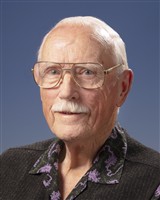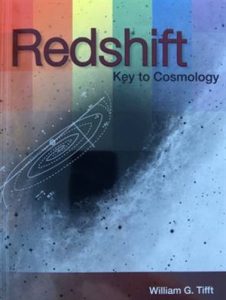 Recognized as a renowned scientist and retired astronomy professor, William G. Tifft, PhD, reached emeritus status at the University of Arizona in 2002 after 38 years as a faculty member. Spending one year as a research associate at Vanderbilt University and three years in the field as an astronomer at Lowell Observatory in Flagstaff, Arizona, he began his career in academia at the university as an associate professor in 1964. In 2016, he established a small Arts and Science Heritage Fund. His role as a scientist was recognized as early as a high school senior. Additionally, in 1950, he was one of the top 10 nationally recognized young scientists in the Ninth Annual (then Westinghouse) Science Talent Search.
Recognized as a renowned scientist and retired astronomy professor, William G. Tifft, PhD, reached emeritus status at the University of Arizona in 2002 after 38 years as a faculty member. Spending one year as a research associate at Vanderbilt University and three years in the field as an astronomer at Lowell Observatory in Flagstaff, Arizona, he began his career in academia at the university as an associate professor in 1964. In 2016, he established a small Arts and Science Heritage Fund. His role as a scientist was recognized as early as a high school senior. Additionally, in 1950, he was one of the top 10 nationally recognized young scientists in the Ninth Annual (then Westinghouse) Science Talent Search.
Influential in the testing of the nature of the redshift with new redshift data and an early proponent of manned space astronomy, some of Dr. Tifft’s main interests have been in galaxies, superclusters and the possible non-dynamical nature of the redshift. Based on observations of relatively nearby galaxies, he has developed the idea that the redshifts of galaxies are quantized in steps, which are multiples of certain precise fractions of the speed of light. His early critical findings, leading to redshift quantization, were published in the Astrophysical Journal in 1972, with broader general discussion in 1976 and 1977. The ideas were controversial, but based upon real data when proposed and the editors of the journal have included a note in two of Dr. Tifft’s papers, stating that they could neither find errors within the analysis nor endorse the analysis. His invited presentation at the Hoyle Memorial Conference held in Cardiff, Wales, in 2002 was an effective background summary of his developing cosmology.
 Much of Dr. Tifft’s research has been documented in more than 100 articles throughout various professional journals. He served as a joint author of “Revised New General Catalog” in 1973, with colleagues formed a “Conference on Modern Mathematical Models of Time and their Application to Physics and Cosmology” in 1996, and authored “Redshift Key to Cosmology” in 2014. In 1965, he was a member of the final Woods Hole National Academy sponsored committee that recommended that the Large Space Telescope be produced. Dr. Tifft was also considered as a candidate to become one of the first scientist astronauts that year.
Much of Dr. Tifft’s research has been documented in more than 100 articles throughout various professional journals. He served as a joint author of “Revised New General Catalog” in 1973, with colleagues formed a “Conference on Modern Mathematical Models of Time and their Application to Physics and Cosmology” in 1996, and authored “Redshift Key to Cosmology” in 2014. In 1965, he was a member of the final Woods Hole National Academy sponsored committee that recommended that the Large Space Telescope be produced. Dr. Tifft was also considered as a candidate to become one of the first scientist astronauts that year.
A fellow of the American Astronomical Society and a member of the International Astronomical Union, Dr. Tifft completed a Bachelor of Arts in astronomy at Harvard College in 1954 graduating among the top 10%, and a PhD in astronomy and physics at the California Institute of Technology in 1958, also completing four years as a National Science Foundation (NSF) pre-doctoral fellow. He received a two-year postdoctoral NSF fellowship at the Australian National University in Canberra, ACT, Australia, as an honorary research fellow at Mt. Stromlo Observatory from 1958 to 1960. Dr. Tifft was further the recipient of several grants from NASA, the NSF, the Office of Naval Research and the Research Corporation. He has been a member of Phi Beta Kappa since 1954.
Site powered by Who’s Who Publishers